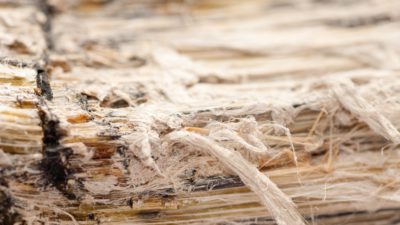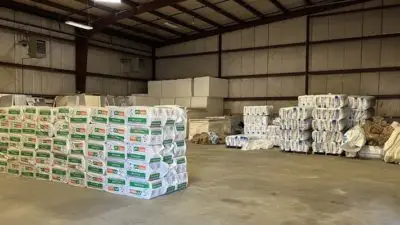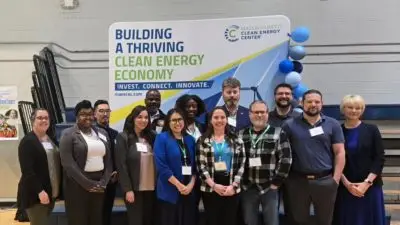“The equivalent of one garbage truck of plastic enters into our seas every minute, every day, all year long.” –greenpeace.org
Plastics have been in existence for a while, but in 1907, the first synthetic plastic was created, not from animals or plants, but from fossil fuels – a moment that many call the “birth of the modern plastics era.”
When World War II began, there was a growth in the application of and reliance on plastics, as they were used in military vehicles, mortar fuses, parachutes, aircraft parts, weapons, helmet liners, and more, according to Scientific American. The production of plastics increased drastically during the war, almost quadrupling – going from about 213 million pounds in 1939 to 818 million pounds in 1945.
When the war ended, plastics began their way into consumers’ homes, and that’s when things like Tupperware (created in 1946) started popping up in the market.
Today, plastics touch the lives of consumers in more ways than many probably realize, and plastic pollution has become a problem that gets more concerning every day, as it shows no signs of slowing down.
Statistics About Plastics & Pollution Today*
- 1 million plastic drinking bottles are purchased every minute
- 5 trillion single-use plastic bags are used worldwide every year
- 50% of all plastic produced is designed to be used only once and then thrown away
- In the early 2000s, output of plastic waste increased more in a single decade than it had in the previous 40 years
- About 30 million tons of plastic waste is produced annually
- 99% of plastics are produced from chemicals derived from oil, natural gas, and coal (nonrenewable resources)
*numbers provided by the United Nations
Common Plastic Pollution Sources
According to the U.S. Environmental Protection Agency (EPA), landfills received 27 million tons of plastic in 2018, or almost 19% of all municipal solid waste landfilled.
A global study from the United Nations found that the most common form of plastic waste present in the environment were cigarette butts (there are plastic fibers in the filters)! The next most common items noted were food wrappers, drink bottles and caps, grocery bags, drink lids, straws, and stirrers.
The Plastic Problem in the Ocean
Plastic is literally being found everywhere, and the ocean is no exception.
From isolated shores, to the deepest depths of our oceans, to the most remote waters of the Arctic, plastics are appearing in bulk.
According to the United Nations, 8 million tons of plastic end up in the ocean every year. If this trajectory continues, there could be more plastic in the ocean than fish by 2050.
Plastics don’t fully biodegrade (they stick around for hundreds, even thousands of years) but instead, they break down into tiny particles that stay in the ocean for years and years. Birds, sea mammals, and fish become entangled in debris that has yet to start the decomposition process and consume the small plastic particles that are floating around in the waters, resembling food.
In 1960, plastic remnants were found in the stomachs of 5% of seabirds, but scientists now estimate that more than 50% of the world’s sea turtles and 90%+ of seabirds have consumed plastic in their lifetimes, says National Geographic.
How to Reduce Plastic Pollution
Experts all over the world say that the number one way to reduce plastic waste in our environment is to stop it at the source with the consumer. Here are some things you can do to curb your consumption of plastic:
- Reduce single-use plastic consumption: Replace the purchase of plastic water bottles with a reusable bottle with a filter, refuse straws in to-go orders and at restaurants, and bring reusable grocery bags to the store instead of walking away with plastic ones
- Shop sustainable: Read labels, do your own research, and support environmentally-conscious companies who are making green choices to protect the planet (click here to read about organizations that are working to reduce plastics like McDonald’s, American Airlines, and Evian)
- Spread the word and advocate for a reduction in plastic use: Donate to environmental causes, volunteer for green organizations involved in advocacy or trash pickup, educate others about sustainability, and sign petitions, write letters, and make phone calls that impact the decisions made in your communities and beyond
- Cook at home instead of eating out: When you make more meals at home, you can easily avoid takeout containers, bags, cutlery, and more (read more here about making your kitchen a more efficient place to cook)
- Recycle plastics: When you do use a plastic that you then plan on disposing of, learn about your recycling options and make the best choice available (for help finding a place that recycles plastic and info about what types of plastics are recycled, click here)
If you’re wondering where to start, Lauren Singer, founder of the zero-waste blog Trash is for Tossers, says that the best place to figure this out is in your trash can. She recommends looking at what you’re throwing away or recycling, and then picking one thing, creating a solution, and making that solution into a habit – once you feel good about that, move on to something else.
What new green habits are you going to start this year?
To make your home more energy efficient, call HomeWorks Energy at (781) 305-3319 for all the energy upgrades and rebates you need to live cleaner and greener.








